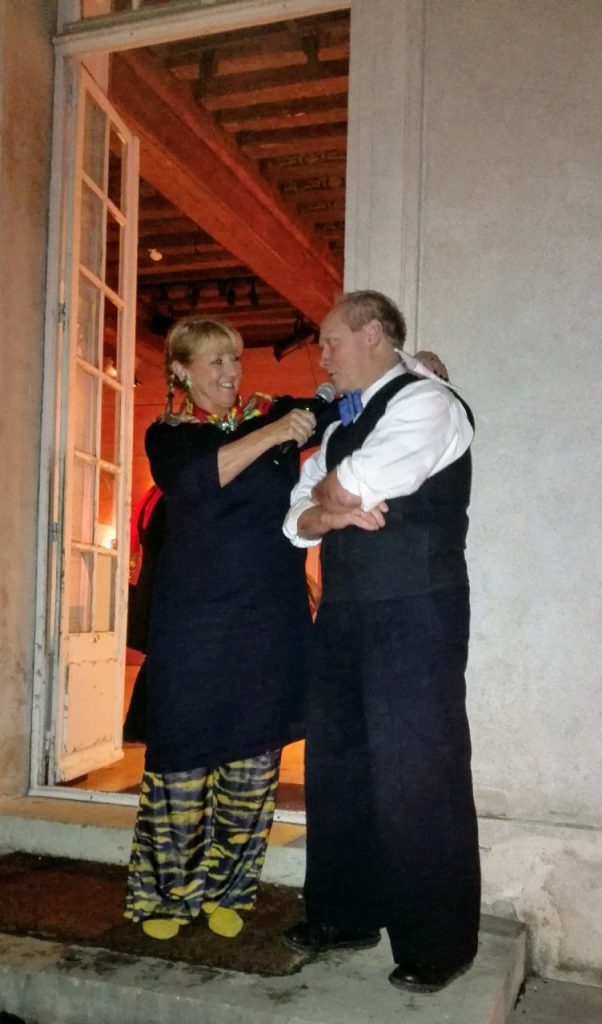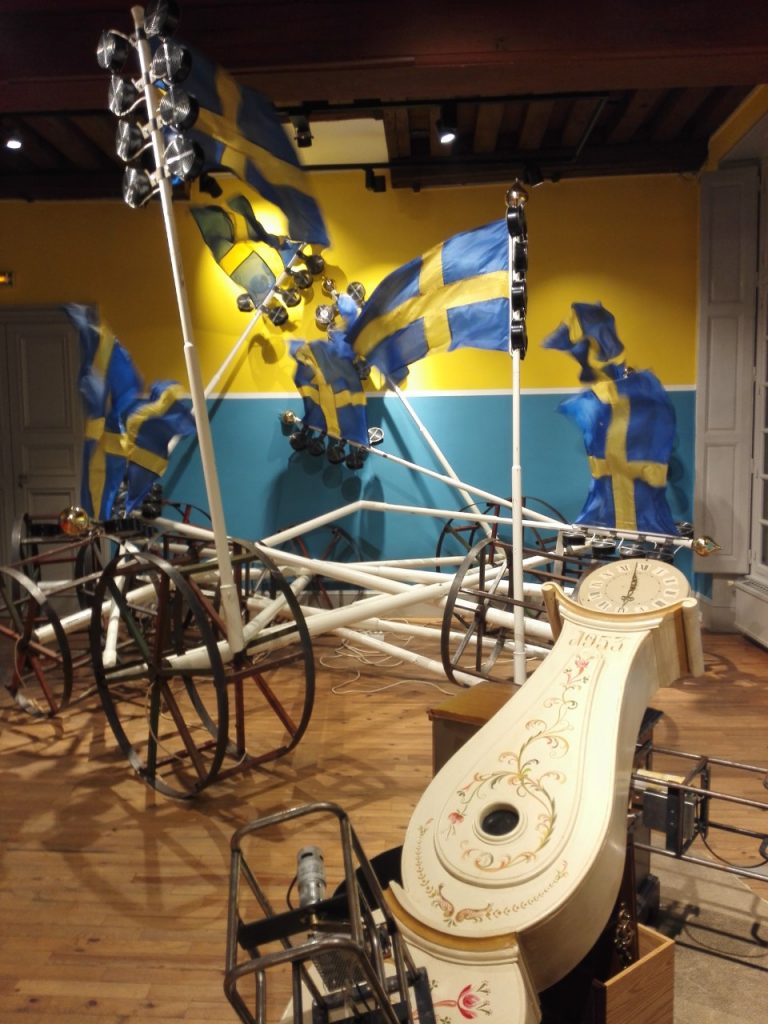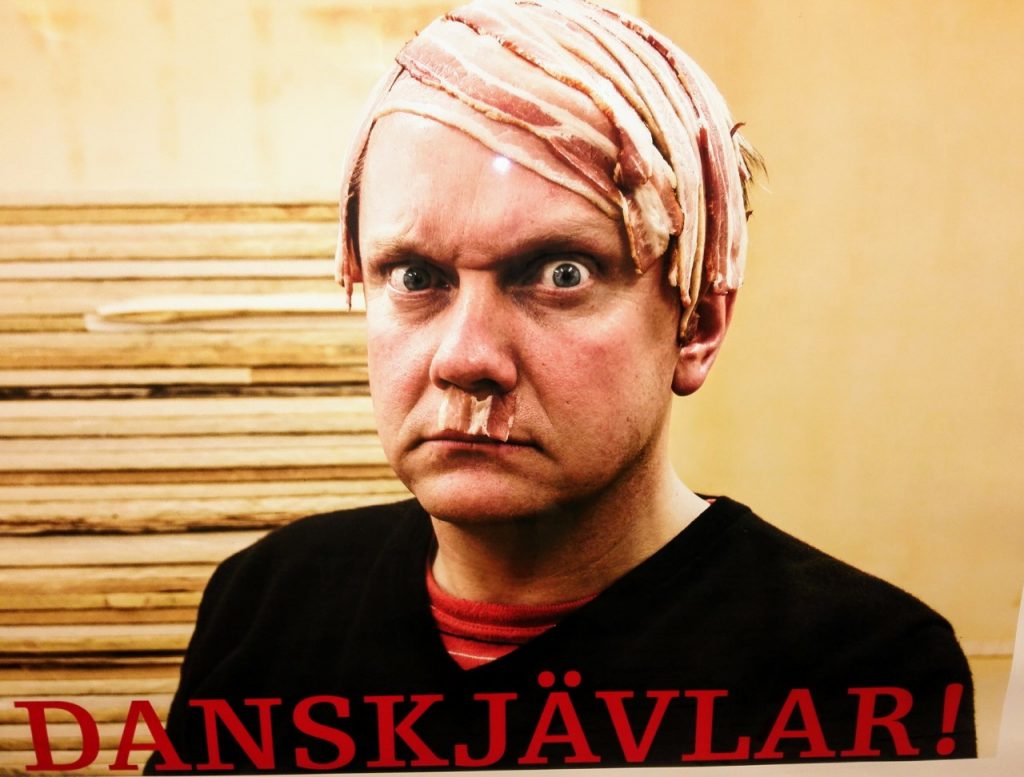Ewa Kumlin and Peter Johansson
Peter Johansson, a controversial contemporary artist, together with Ewa Kumlin, the Swedish Institute’s director, presented this winter’s exhibition, called ‘National Therapy’, to an amazed French public.
The Swedish Institute (that was saved in extremis, a few years ago, from being closed down due to lack of funds) is situated in the hub of Paris’ art scene, in the Marais. It has become of the most frequented art arenas of this cultural capital. Parisians flock to the ancestral palace, with its exhibitions, café and lush garden.
The opening was held in a chilly November evening with the artist and the SI director explaining his works in midst of the institute’s garden. A tent had been put up serving beer and sausages. And sausages are definitely a recurrent theme in Peter’s art, as is he himself, dressed or undressed (more often than not).
An enormous stuga, or cottage, painted in the typical red colour of most Swedish country-houses, rotated in mid-air above our heads. The sculpture, named ‘Family Therapy’, invites the audience to raise questions about what the family stands for in our contemporary world. Like the rest of Peter’s works which show no boundary when it comes to mocking and making fun of anything that has to do with nationalism, patriotism, traditions or conventional family life.
The institute’s ground floor was buzzing with fans blowing air on a sculpture with Swedish flags, next to a homemade canon piercing embroidered paintings of a house and Beatbox, a sound sculpture, shouting out the unofficial national hymn of the Swedish Nazi movement. Next to which was one of the artist’s several auto-portraits, depicting Hitler with bacon as hair and moustache.
An entire wall is dedicated to photographs of Peter naked; painted in the colours of the typical Dalacarian wooden horse; dressed up like the famous 19th century artist, Anders Zorn; or enveloped as a sausage. His imagination shows no limits in depicting and making fun of every typical Swedish mark.
On the upper floor, usually devoted to among others, Alexander Roslin, an ancient royal painter, the walls had been covered by wooden panels, pierced with holes for the audience to catch a glimpse of diverse more or less explicit and fun mockeries of the aristocracy of the time, but not without expressing some self-irony, as well as more or less explicit sexual connotations. I was wondering what he might have experienced in his life, to show such contempt for his own body and sexuality in general?
Sausages were sticking out in most of the works. Making it, at least for me, impossible to go out and eat one afterwards in the kiosk that served them in the garden.
The entire exhibition might be analysed as a derision of the Swedish National Right party or SD (Sverige demokraterna) that seems to be taking the country by storm, but equally as a surrealist sense of humour, making fun at anything conventional. Peter’s humanity transpires by showing our vulnerability and shortcomings as mere humans thrown into the violence of the world.
He doesn’t seem to take the discussion further, into a spiritual or godly possibility; there is no offer of redemption. That’s maybe why the exhibition left me with a sense of unease and hopelessness.
Undoubtedly, the exposition will raise more questions than it will answer. The question is whether it will draw the French public to want to explore Sweden further or on the contrary, to get as far away from it as possible?
However, it isn’t the artist’s job to attract tourists but rather to raise uncomfortable questions. And in that respect we must admit that Peter Johansson has succeeded over expectations!
Anne Edelstam, Paris.
Institut Suédois
15 November 2019 – 1 March 2020





